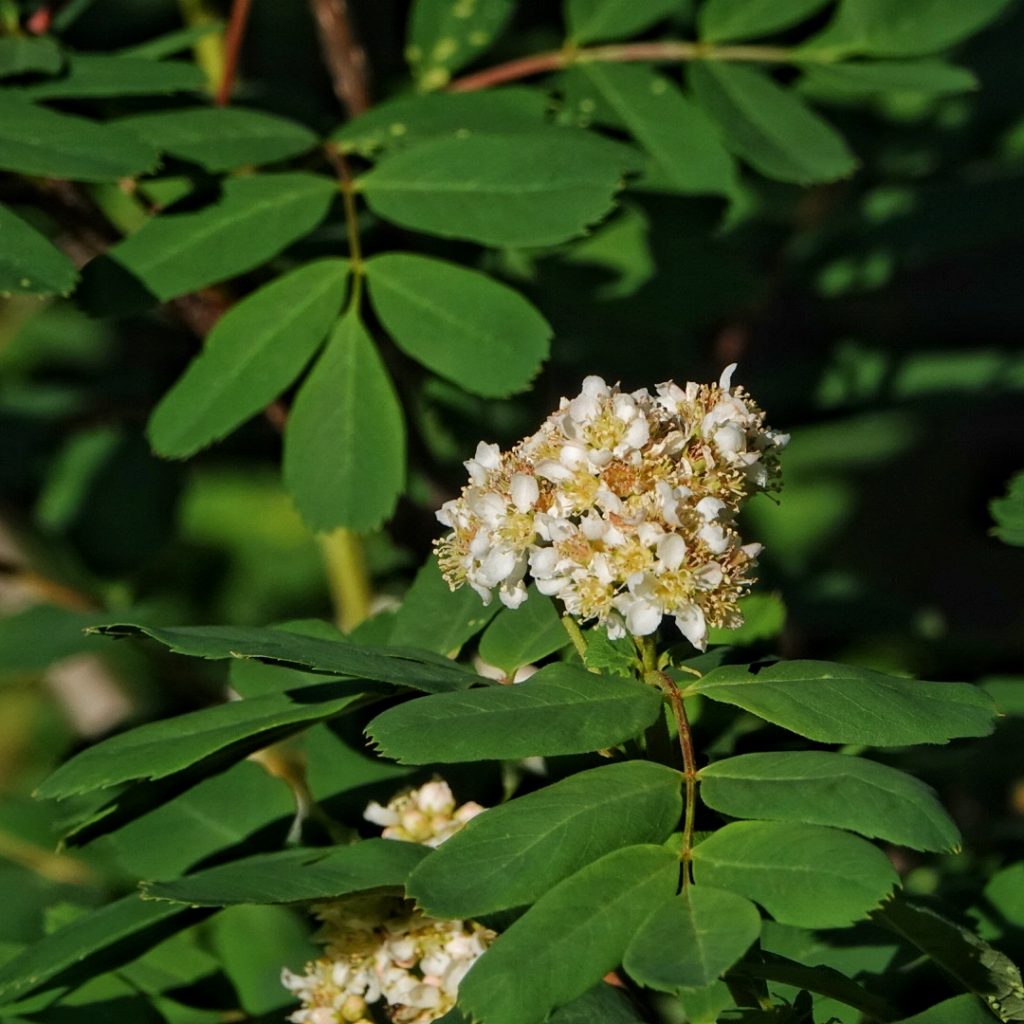
Though I’ve thought that I had found these fairly distinctive and interesting members of the rose family before, I had never previously taken the time to positively identify which mountain ash they were, until my recent trip into the mountains with Craig and William Sondergaard. Sorbus sitchensis turned out to be fairly easy to differentiate based on its blunt leaf tip and lesser amount of leaf serration, and now I know what to keep an eye out for as I look for it’s close cousin, Sorbus scopulina. In yet another example of why common names are not useful, mountain ash aren’t even in the same taxonomic order as the true ash, trees which are members of the genus Fraxinus, and are in the olive family.
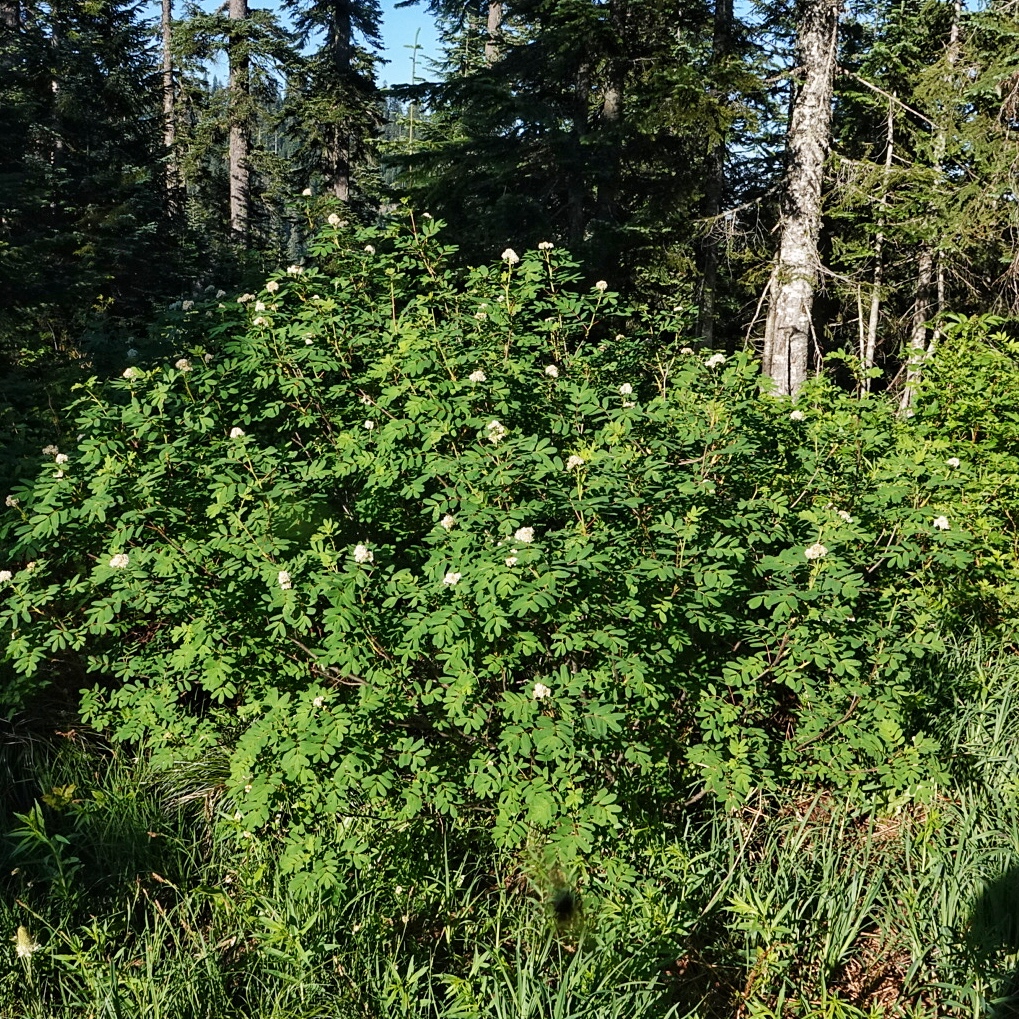
The berries (actually pomes) persist after the leaves have fallen, and are an important food source for grouse, songbirds, and small mammals in the fall and early winter. They are apparently sweeter after a frost or two, and that is usually when they are picked by humans, primarily for jam making since at their tastiest they are still not exactly delicious. But many indigenous cultures also boiled them as part of a soup, mixed them with other berries, and stored them dried as winter food.
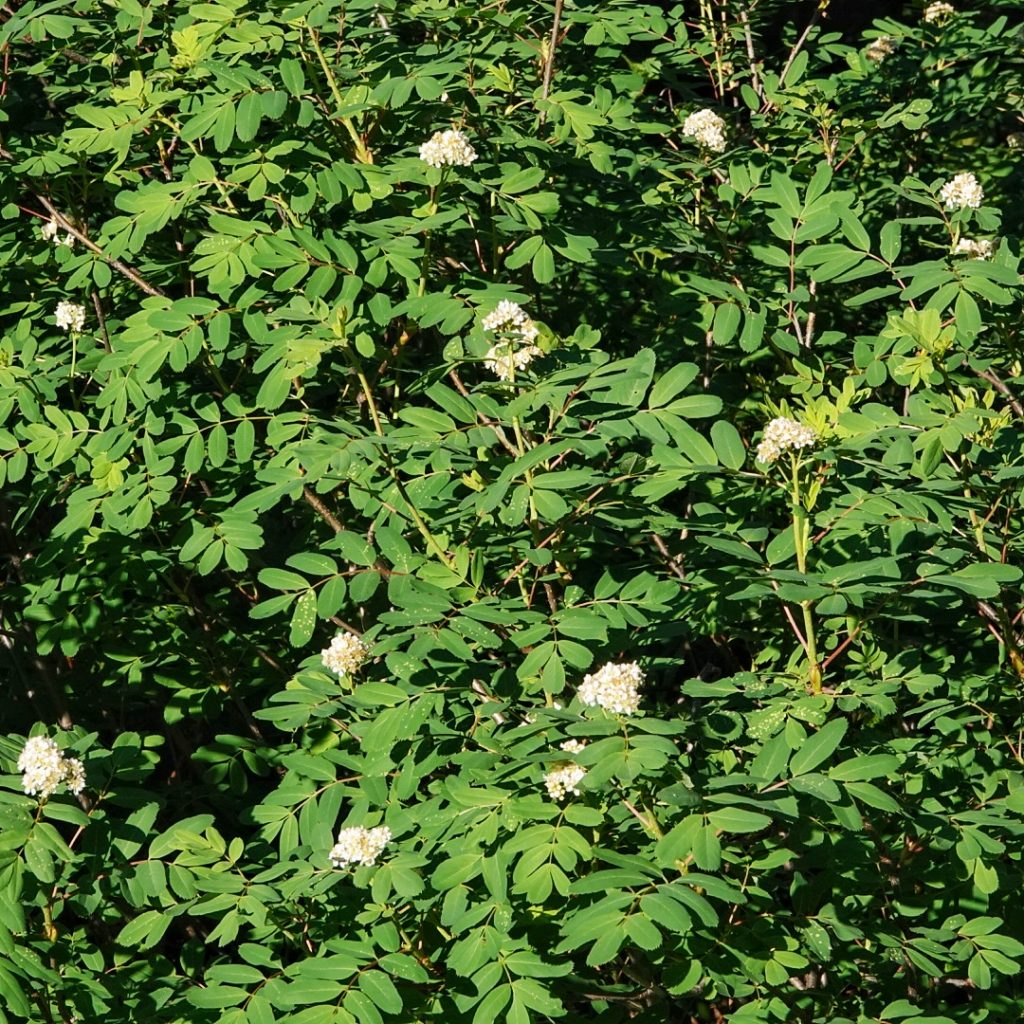
Western Mountain Ash was also were used to treat various medical ailments. An infusion of roots and bark was given for arthritis, stomach problems, and as an eyewash, the bark was chewed for colds, decoctions from the branches were utilized for kidney and urinary problems, and to mitigate bed wetting in children, and the berries were mashed into the scalp to get rid of lice.
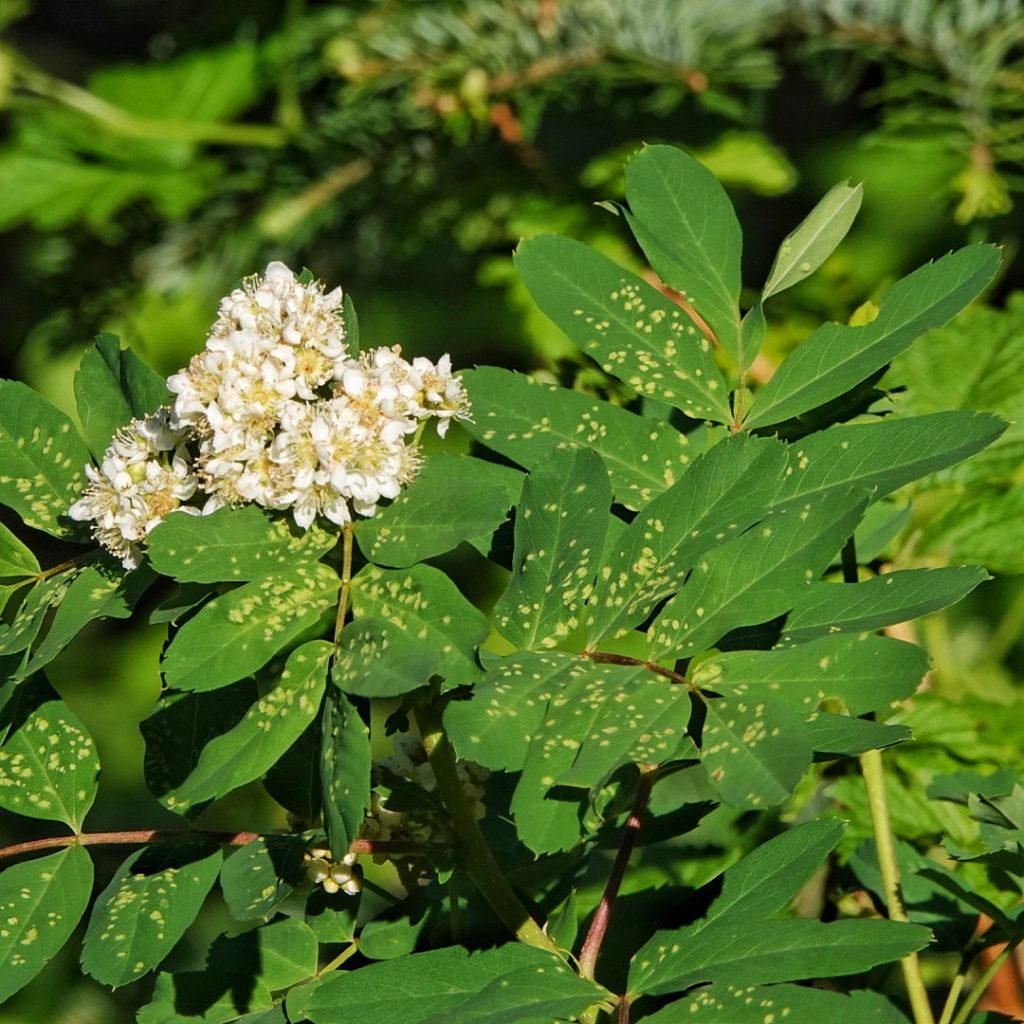
The reason that last treatment was effective is that the plant as a whole contains cyanogenic glycosides. In small dosages these cyanide compounds can be beneficial (and are even being studied for their anti-cancer properties), but higher levels can be toxic. Boiling, roasting, drying, and freezing probably cut down on the level of toxicity, but great care should be exercised when ingesting anything from these plants in large quantities. It is said that the cyanogenic glycosides impart a very bitter flavor, and avoiding the more bitter berries may reduce the risk from eating them.
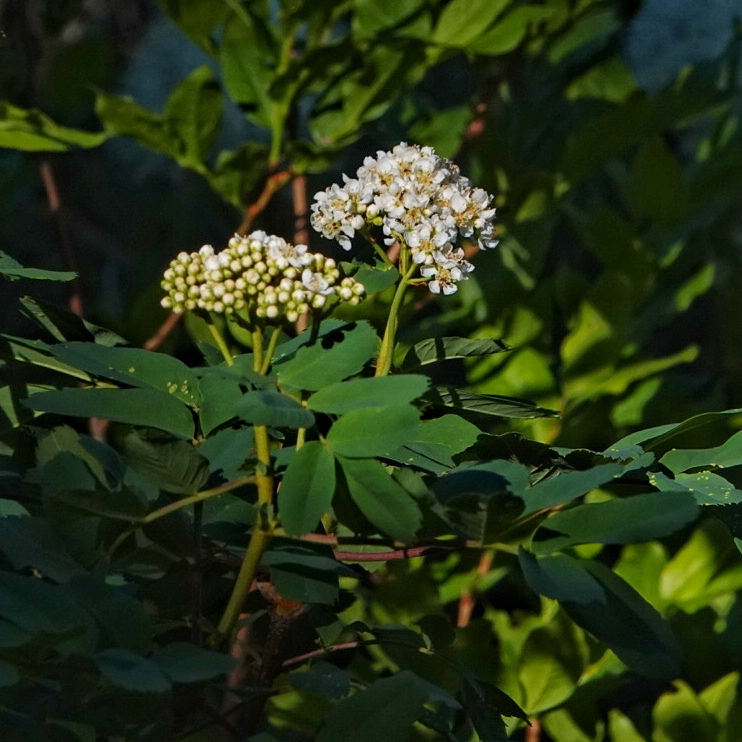
Description-Large (up to 12’ tall) shrub with pinnately divided leaves and large (up to 4”) clusters of small white flowers; 7-11 leaflets per leaf, leaflets oval, at most twice as long as wide (usually much less), serrated on upper half, blunt tipped, with reddish hairs; up to 80 flowers per cluster, 10-15mm wide; fruit pinkish to dull red.
Similar species–S. scopulina has pointed leaves that are up to 3 times as long as wide, with teeth all the way to the base; Amelanchier alnifolia has large, single flowers and dark purple fruit.
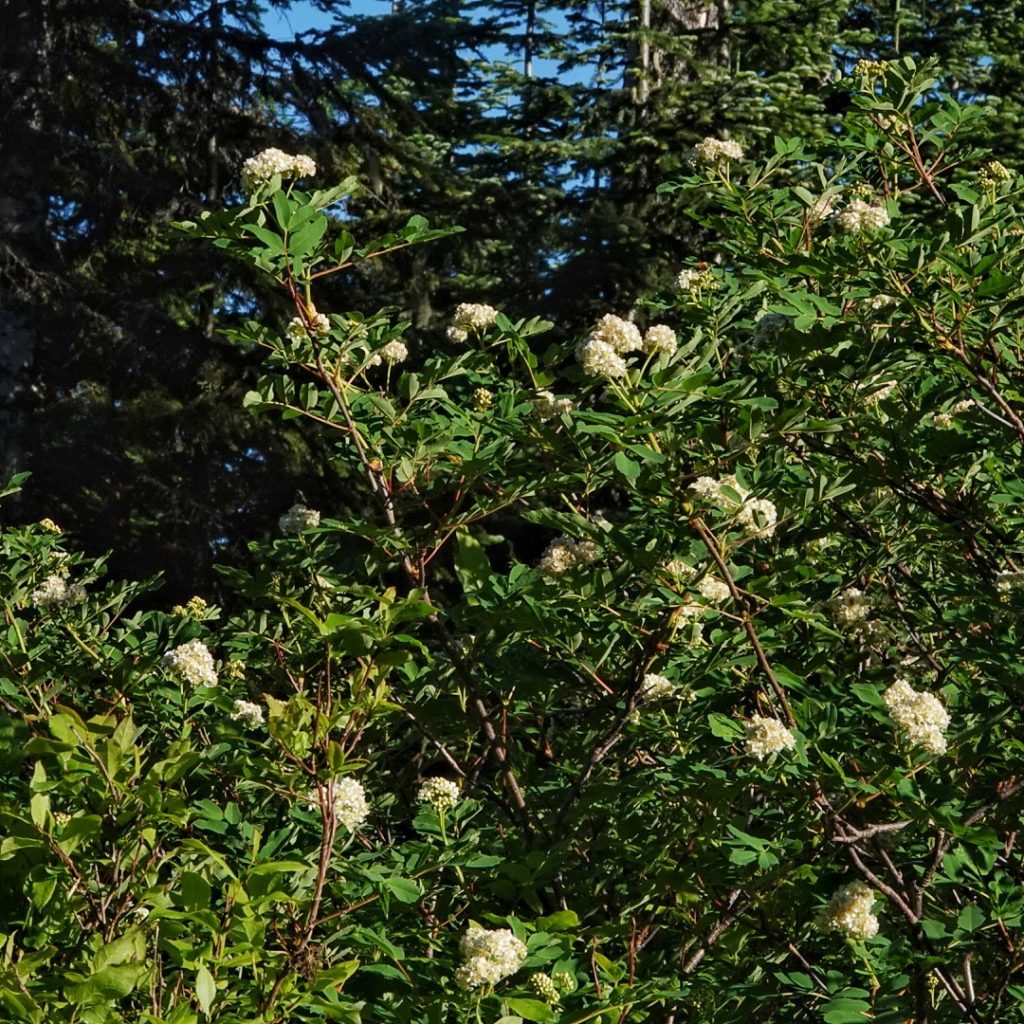
Habitat-Moist to mesic montane forests, forest openings, and meadows, up to 9,000’ elevations.
Range-Western North America; found in the Cascades, Olympics, Coast Range, Siskiyous, Blues, Wallowas, Ochocos, Steens, and Rockies.
Reproductive timing-Blooms June to August, fruits ripen September-October.
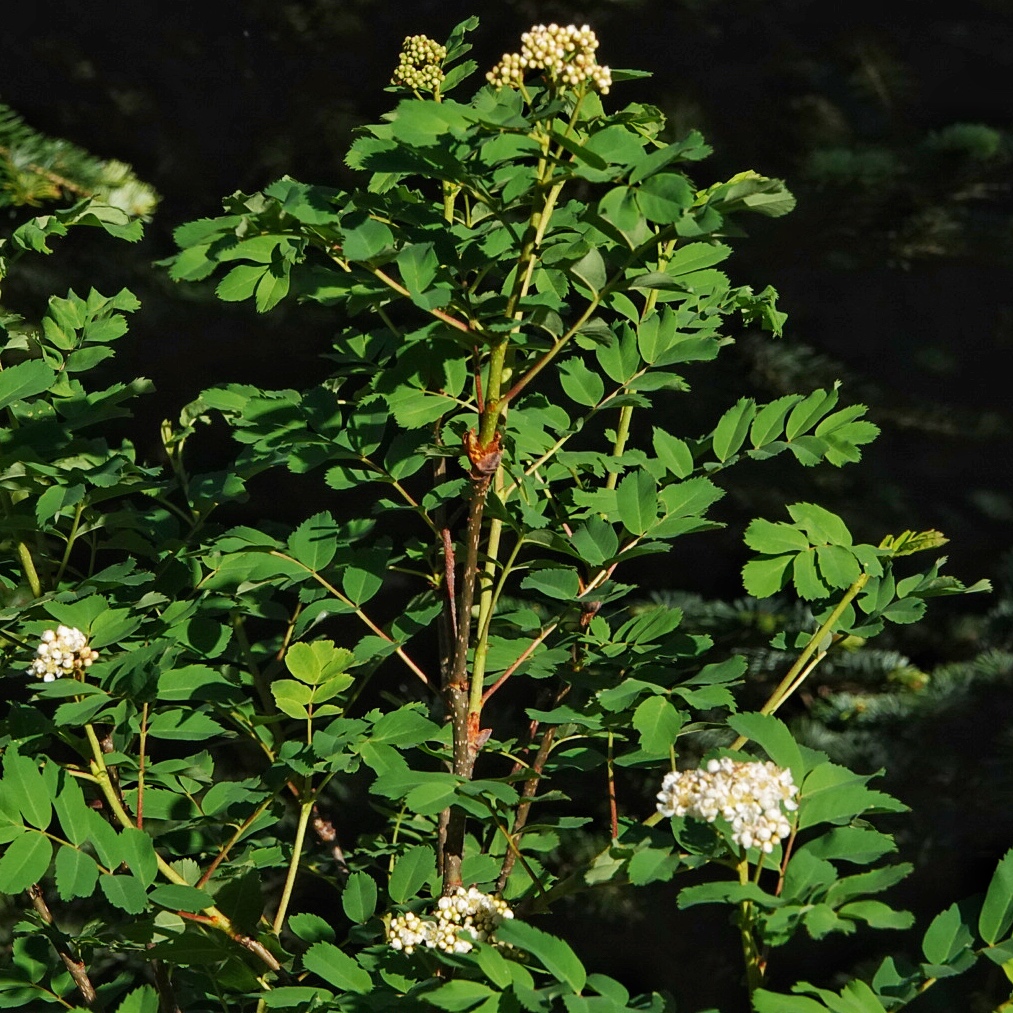
Eaten by-Larvae of the fly Coleophora spinella, and the moth Recurvaria nanella mine the leaves; larvae of the moths Acronicta lupini, Malacosoma californica and those in the genera Venusia and Lomographa, feed on the buds and leaves; bears eat the berries when freshly ripe, and they provide important late season forage for birds and small mammals; deer and elk browse the twigs and leaves; flowers visited by a variety of pollinators.
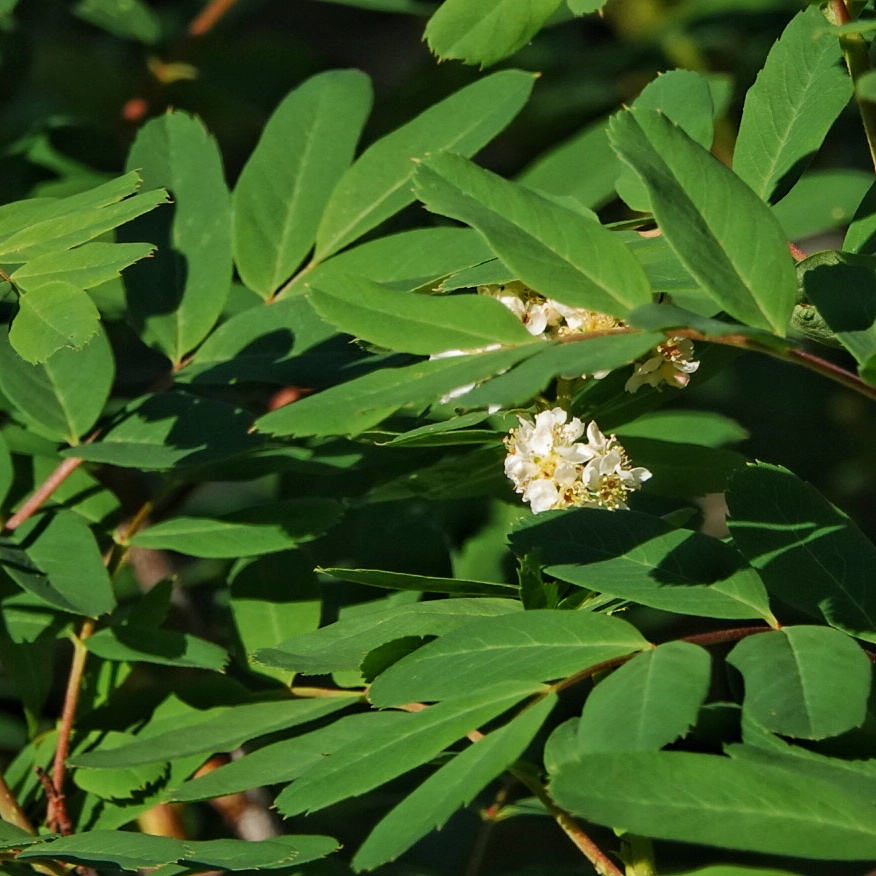
Etymology of names–Sorbus is the Latin word for the service tree or rowan, Sorbus domestica. The specific epithet sitchensis comes from the Sitka tribe, and refers to the type specimen being found in the PNW.
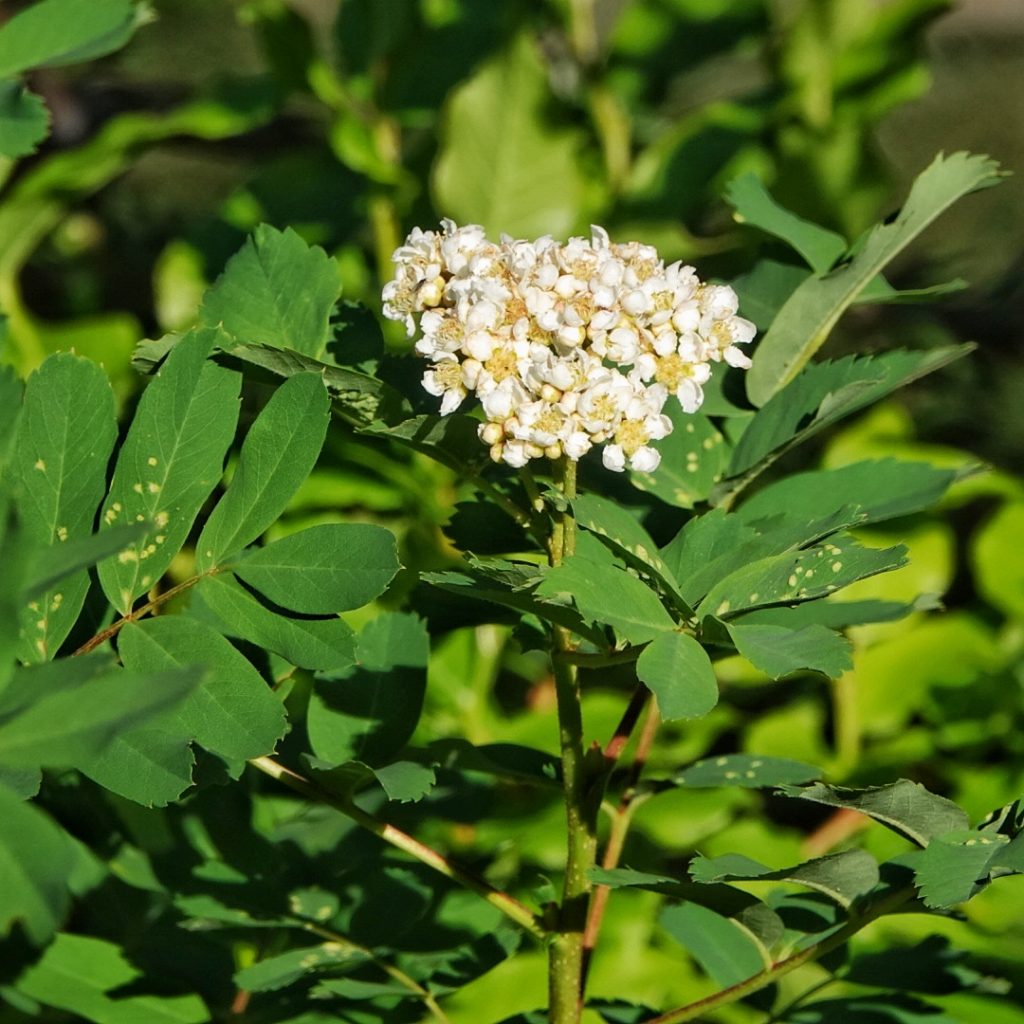
https://www.fs.fed.us/database/feis/plants/shrub/sorsit/all.html
http://temperate.theferns.info/plant/Sorbus+sitchensis
http://nativeplantspnw.com/sitka-mountain-ash/
Sorbus sitchensis | Sitka Mountain-ash | Wildflowers of the Pacific Northwest
http://naeb.brit.org/uses/search/?string=Sorbus+sitchensis
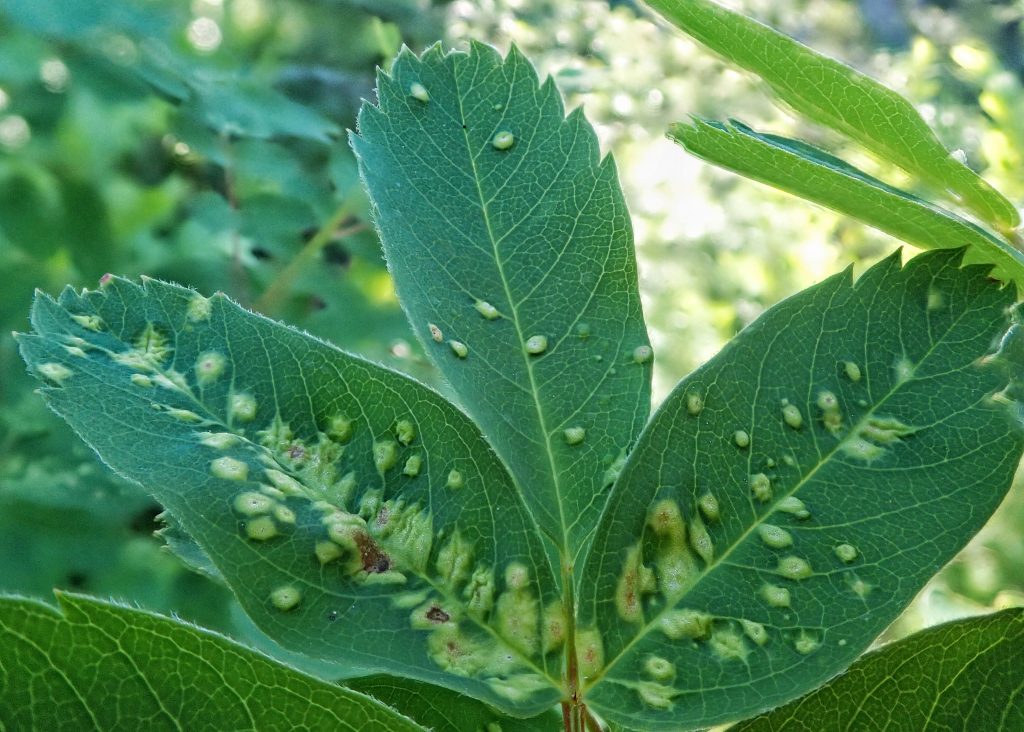
Gradually being displaced in the PNW by the European Mountain Ash (Rowan), Sorbus aucuparia, which is brought in by nurseries and spread by birds.